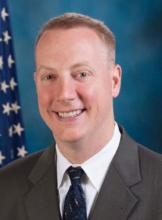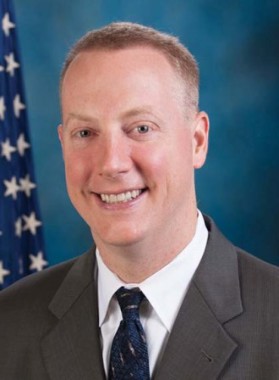User login
Dr. Patrick Conway, the chief medical officer at the Centers for Medicare and Medicaid Services, recently congratulated hospitalists for their role in bringing down readmission rates.
For decades, hospital readmissions were "rock solid" at between 19% and 19.5%, according to Dr. Conway. But starting in 2012 and continuing into 2013, readmission rates have fallen to about 17.7% nationally.
"That is hundreds of thousands of Medicare beneficiaries that are not readmitted every year," he said.
Speaking at the annual meeting of the Society of Hospital Medicine, Dr. Conway, who still works on a volunteer basis as a pediatric hospitalist on weekends, said the drop in readmissions is a credit to the work of hospitalists and other frontline providers.
The change coincides with the implementation in October 2012 of Medicare’s Readmissions Reduction Program, which reduces payments to hospitals with excess readmissions in the areas of pneumonia, acute myocardial infarction, and heart failure. But Dr. Conway disagrees with those who say that the penalty is solely responsible for the change.
"I think it’s a combination of interventions," Dr. Conway said. "We’re doing QI interventions in the field; there’s payment; there’s support structures; there’s investments in communities. But overall, the major point is we’re moving the national needle."
So what’s next? The CMS is putting readmission measures in place in every setting, including nursing homes, home health settings, and for physicians. The idea is to drive "shared accountability and focus," he said. Also coming down the pike are plans from the CMS to tie a small amount of hospital payments to lowering admission rates. Dr. Conway said that the Medicare officials don’t just want hospitals to be focused on readmissions, but to begin focusing on how to prevent admissions as well.
Dr. Patrick Conway, the chief medical officer at the Centers for Medicare and Medicaid Services, recently congratulated hospitalists for their role in bringing down readmission rates.
For decades, hospital readmissions were "rock solid" at between 19% and 19.5%, according to Dr. Conway. But starting in 2012 and continuing into 2013, readmission rates have fallen to about 17.7% nationally.
"That is hundreds of thousands of Medicare beneficiaries that are not readmitted every year," he said.
Speaking at the annual meeting of the Society of Hospital Medicine, Dr. Conway, who still works on a volunteer basis as a pediatric hospitalist on weekends, said the drop in readmissions is a credit to the work of hospitalists and other frontline providers.
The change coincides with the implementation in October 2012 of Medicare’s Readmissions Reduction Program, which reduces payments to hospitals with excess readmissions in the areas of pneumonia, acute myocardial infarction, and heart failure. But Dr. Conway disagrees with those who say that the penalty is solely responsible for the change.
"I think it’s a combination of interventions," Dr. Conway said. "We’re doing QI interventions in the field; there’s payment; there’s support structures; there’s investments in communities. But overall, the major point is we’re moving the national needle."
So what’s next? The CMS is putting readmission measures in place in every setting, including nursing homes, home health settings, and for physicians. The idea is to drive "shared accountability and focus," he said. Also coming down the pike are plans from the CMS to tie a small amount of hospital payments to lowering admission rates. Dr. Conway said that the Medicare officials don’t just want hospitals to be focused on readmissions, but to begin focusing on how to prevent admissions as well.
Dr. Patrick Conway, the chief medical officer at the Centers for Medicare and Medicaid Services, recently congratulated hospitalists for their role in bringing down readmission rates.
For decades, hospital readmissions were "rock solid" at between 19% and 19.5%, according to Dr. Conway. But starting in 2012 and continuing into 2013, readmission rates have fallen to about 17.7% nationally.
"That is hundreds of thousands of Medicare beneficiaries that are not readmitted every year," he said.
Speaking at the annual meeting of the Society of Hospital Medicine, Dr. Conway, who still works on a volunteer basis as a pediatric hospitalist on weekends, said the drop in readmissions is a credit to the work of hospitalists and other frontline providers.
The change coincides with the implementation in October 2012 of Medicare’s Readmissions Reduction Program, which reduces payments to hospitals with excess readmissions in the areas of pneumonia, acute myocardial infarction, and heart failure. But Dr. Conway disagrees with those who say that the penalty is solely responsible for the change.
"I think it’s a combination of interventions," Dr. Conway said. "We’re doing QI interventions in the field; there’s payment; there’s support structures; there’s investments in communities. But overall, the major point is we’re moving the national needle."
So what’s next? The CMS is putting readmission measures in place in every setting, including nursing homes, home health settings, and for physicians. The idea is to drive "shared accountability and focus," he said. Also coming down the pike are plans from the CMS to tie a small amount of hospital payments to lowering admission rates. Dr. Conway said that the Medicare officials don’t just want hospitals to be focused on readmissions, but to begin focusing on how to prevent admissions as well.

